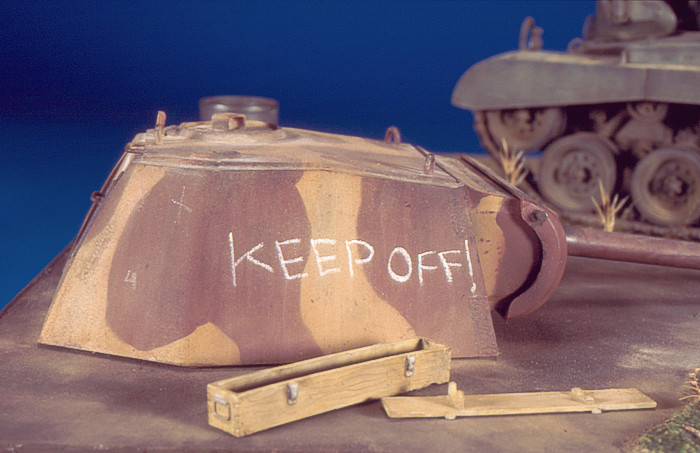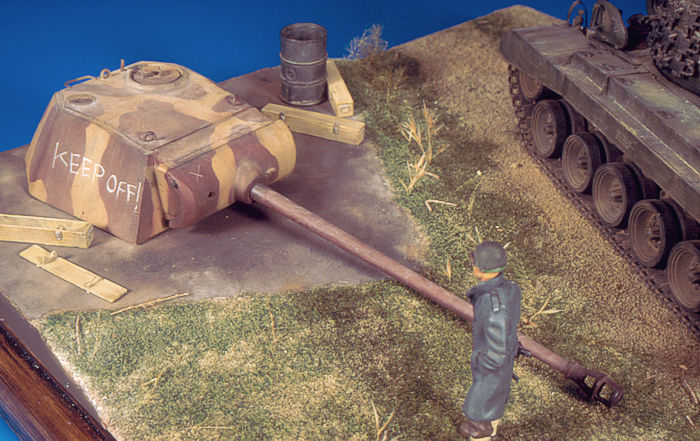
MOVE ON!
Pantherstellung

I wanted to depict one of the purposely built turret for use as emplacements, and not one coming from recovered tanks. To build the Pantherstellung I used only "recycled" stuff. The body of the turret came from an old Nichimo Panther G model. The mantlet and muzzle brake are Italeri's, the aluminium gun barrel is Jordi Rubio's, and some bits such as the close defence weapon in the turret, the hatch and its hinge and some other bits were from the spare box. The extra armour on the roof is plastic card aprox. 1 mm thick. The periscope guard was made of aluminium foil and the lifting hooks and handle of plastic rod.
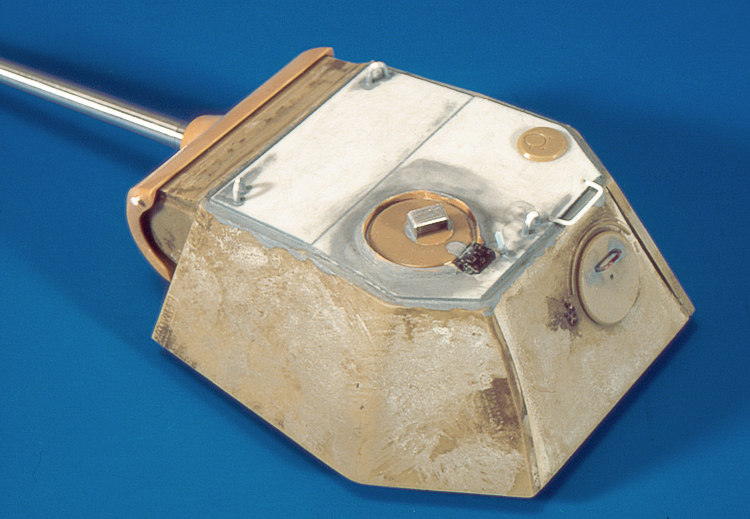
The base colour for the turret is the red primer used in the final stages of WWII by the German. I used a mixture of Red (50%), Black (10%) and red brown (40%), all Tamiya acrylics. Over this base coat a applied a disruptive colour, prepared by mixing Dark Yellow (40%), Buff (30%) and Flesh (30%). To get a hard edged camo scheme I used children's plasticine as masking medium. I used the non oily variant, the one which is even soluble in water ("Play doh" is a commercial brand, at least here in Spain). The plasticine has the advantage that can perfectly be adapted to any surface and that can be easily removed after painting. Next step was to remark the profiles with a very diluted mixture of red brown an black. Whith this, the airbrush phase was over.
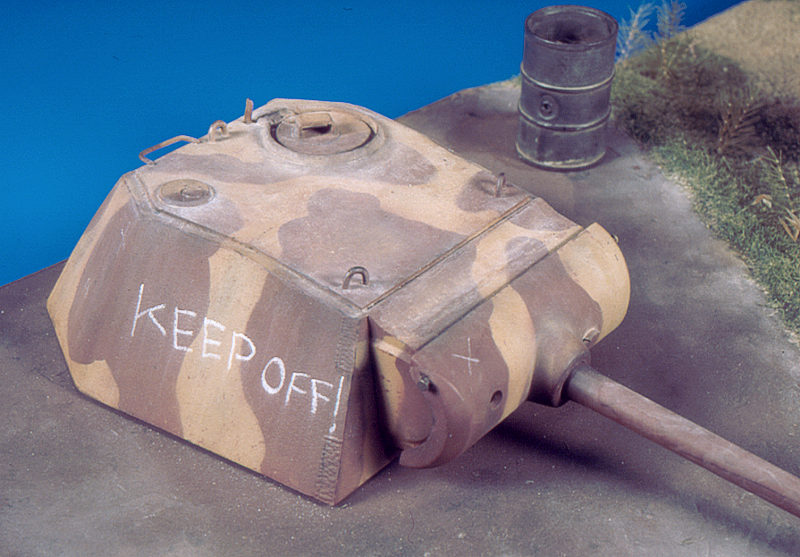
The "brush stage" started with a filter of Humbrol's reddish brown Matt 62. The "chipping" was now done. The places were the red primer appears under the lighter tan color were painted with Vallejo Hull red. The rusted chips were done with a mixture of Vallejo's Model Color Chocolate Brown (872) and Black (950) diluted with water. It is necessary to use a very thin and sharp brush and to be very careful. The chipping was mostly done along the edges, in the hatch borders and some few in plane surfaces.
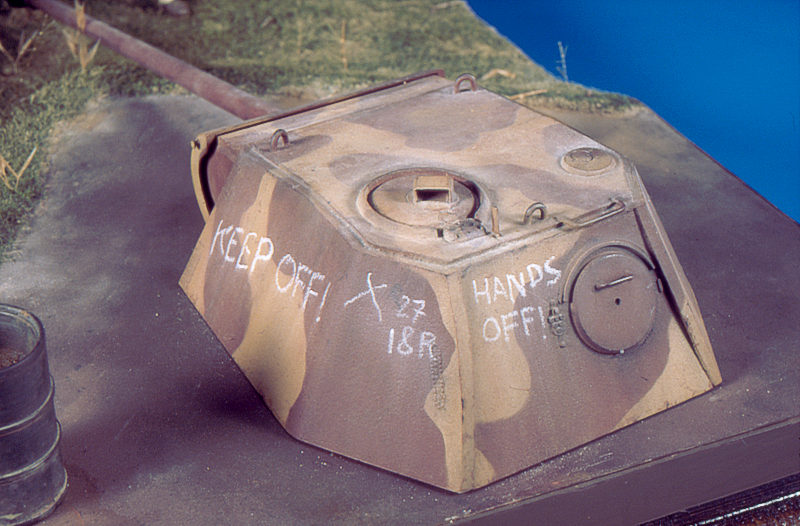
With the aim of achieve more tonal variations of the base colour which could represent some wear and tear I did a mapping using Vallejo acrylic paints. This technique consists in the use of very diluted paint to draw spots of irregular shape. Since the paint is so diluted, when dry, the effect is almost no perceptible, but it is there, and can be enhanced by repetition. If the surface is dry, hard edges in the patches can be achieved. If the surface is previously wetted, the pigment diffuses and soft edges are obtained. For this purpose, I used the following Vallejo Model Color (MC) o Model Air (MA) references: Chocolate Brown (MC 872), Dark Yellow (MA 025), Flat Earth (MC 983), and Hull Red (MC 985). In a similar way, a dusting effect was done with Buff (MC 976), with irregular "clouds" in the horizontal surfaces, allowing the accumulation in the points were the dust would concentrate, and in the form of vertical lines of dust carried away by the rain in the vertical surfaces.
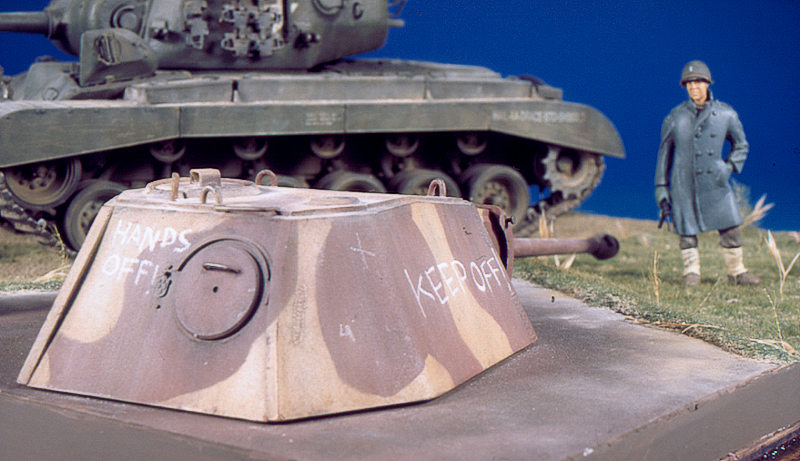
On the turret roof, an additional application of pastels increased the dusty look. Finally, the chalked words on the turret sides were written with an artist's white pencil
